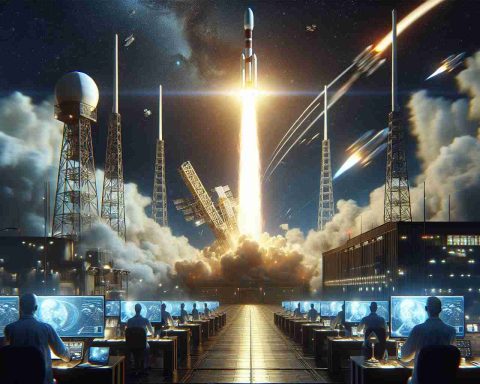The UAE is set to elevate its position in the space race with a groundbreaking joint venture focused on Synthetic Aperture Radar (SAR) satellite technology. This initiative is a direct response to the surging global demand for advanced satellite imagery, a field in which the Finnish company Iceye has emerged as a leader. This collaboration builds on their earlier success with the production of the Foresight constellation satellites, marking a significant advancement in the UAE’s space capabilities.
With this new venture, the partners aim to create a sustainable and sovereign satellite manufacturing capability within the UAE. Rafal Modrzewski, CEO and Co-founder of Iceye, expressed his enthusiasm about extending their satellite production expertise to the region, emphasizing the global implications of their technology.
Space42, another key player in this initiative, is keen to integrate artificial intelligence into the equation. Their CEO, Hasan Al Hosani, stated that the venture aims to enhance value through innovative AI-enabled solutions and bolster the UAE’s presence in the global space technology arena.
This joint effort will not only localize the supply chain but will also provide a platform for Emirati talent to shine, driving innovation and contributing to the nation’s economic growth. SAR technology is pivotal, offering unparalleled imaging capabilities regardless of weather conditions or time, crucial for various applications ranging from infrastructure monitoring to environmental studies. As the UAE advances its space program, this partnership promises to be a cornerstone of its future successes.
The UAE’s Bold Leap into the Future of Satellite Technology
The UAE is making significant strides in the global space landscape with a new joint venture focused on Synthetic Aperture Radar (SAR) satellite technology. This initiative responds to the growing global demand for high-quality satellite imagery, a field where Finnish company Iceye has become a notable leader. The project is an extension of their successful collaboration on the Foresight constellation satellites, marking a substantial enhancement of the UAE’s capabilities in space technology.
Key Features of the Initiative
– Sovereign Satellite Manufacturing: The joint venture aims to establish a self-sustaining satellite manufacturing capability within the UAE, enabling the country to independently produce advanced satellite systems.
– Artificial Intelligence Integration: The partnership includes the integration of artificial intelligence, a move that promises to optimize satellite operations and data processing, enhancing the overall value of the technology developed.
– Local Talent Development: The initiative emphasizes cultivating Emirati talent in space technology, positioning the UAE as a hub for innovation in this critical field. This will not only support local expertise but also contribute to the economic growth of the nation.
Pros and Cons of the Initiative
# Pros:
1. Independence in Satellite Technology: Greater autonomy in satellite production and deployment.
2. Economic Growth: Potential to stimulate job creation and economic development in the region.
3. Advanced Imaging Capabilities: Enhanced ability to monitor environmental and infrastructural changes, irrespective of weather conditions.
4. Boost to Global Presence: Strengthening the UAE’s standing in the international space community.
# Cons:
1. High Initial Investment: The startup costs for establishing manufacturing and R&D facilities can be substantial.
2. Technological Competition: As more countries invest in space technology, maintaining a competitive edge may prove challenging.
3. Dependence on Partnerships: Relying on collaborations with global leaders may affect the speed of local developments.
Use Cases for SAR Technology
– Infrastructure Monitoring: Continuous monitoring of built assets such as roads, bridges, and buildings to ensure structural integrity.
– Disaster Management: Rapid assessment of areas affected by natural disasters for effective response and recovery efforts.
– Environmental Studies: Collecting data on climate change, deforestation, and water levels to support research and inform policy.
– Urban Planning: Enhanced tools for city planners to visualize and manage urban expansion.
Limitations of SAR Technology
While the SAR technology has numerous applications, it also faces certain limitations:
– Data Processing Requirements: Advanced processing capabilities and technologies are required to analyze the large volumes of data generated by SAR satellites.
– Signal Interference: Certain environmental factors can affect SAR signal quality, potentially impacting imaging accuracy.
Market Trends and Predictions
The global market for satellite imagery is expected to grow significantly, driven by advancements in SAR technology and increased demand across various sectors. As countries around the world recognize the strategic importance of space capabilities, initiatives like the one in the UAE may become commonplace.
– Sustainability Focus: There is a growing trend towards developing eco-friendly satellite technologies and sustainable practices in manufacturing.
– AI and Automation: The integration of AI will likely become a standard practice in satellite data analysis, improving efficiency and data utilization.
As the UAE continues to invest in its space program, the collaboration with Iceye and other partners is set to play a crucial role in defining the future of satellite technology and solidifying the nation’s position on the global stage.
For more information about the UAE’s space initiatives and satellite technology advancements, visit UAE Space Agency.







